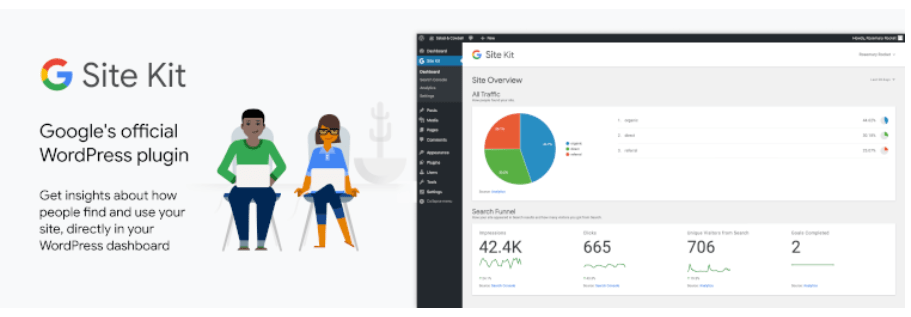Contents

Affiliate marketing is a fantastic way to monetize your WordPress blog. However, when you start running new promotions, it can be hard to know which marketing strategies will work and which won’t.
That’s where A/B testing comes in. With this kind of testing, you can see which offers users react better to. Using some simple tools, you can test copy, design, link placement and cloaking, and just about any other element you want.
In this article, we’ll talk about A/B testing in WordPress. Then we’ll go over a few tips for how to conduct A/B testing effectively for your affiliate business. Let’s get to it!
An Introduction to A/B Testing in WordPress
A/B testing works much the same, regardless of which platform or Content Management System (CMS) you use. In a nutshell, you’ll take two variants of an offer or a page, and randomize which one each visitor will see.
With an A/B testing tool, you can monitor user behavior across both variants. That means being able to track data such as:
- How long users stay on each page
- Which offers get the most clicks or interactions
- Which variant results in the most conversions
Thanks to A/B testing, you don’t need to rely on intuition to find out if visitors are receptive to the changes you make to your pages or offers. Plus, although WordPress doesn’t offer A/B testing functionality out of the box, you have access to dozens of plugins that can help you get the job done.
If you’re a fan of Google tools, you can integrate its Optimize platform with your WordPress website using the Site Kit plugin. Google Site Kit enables you to integrate your website with multiple services, including Analytics and Search Console (as well as Optimize):

Another fantastic option if you want to avoid using Google services is Nelio AB Testing. With the free version of this plugin, you can run simple A/B tests on your website, and get access to heatmaps:

Heatmaps are one of our favorite features for A/B tests, since they let you see precisely which areas of your pages users pay attention to. That can be useful, especially if you like to use Calls-to-Action (CTAs) instead of plain links for your affiliate offers.
How to Conduct A/B Testing for Your Affiliate Website (2 Tips)
Ultimately, which A/B testing tool you use isn’t as important as how you design your experiments. To put it another way, if you’re not asking the right questions, your tests won’t reveal the right answers. Let’s start by talking about what elements you should be testing.
1. Focus on Specific Elements in Your Tests
One of the most common mistakes affiliates make when A/B testing is using entirely different offers or pages. For an A/B test to work, we recommend that you focus on changing one specific element, such as:
- Your offer’s copy
- The placement of your CTA
- Your CTA’s design
- The product images you use
Keeping your tests focused will provide more accurate results, and show you exactly what your audience prefers. If you test two entirely different pages, the test will just tell you which one works best, but not why.
When it comes to affiliate marketing, your primary goal is to get more clicks on your affiliate links. This means that you’ll generally want to focus your A/B tests on your CTAs, links, and product images.
Over time, running multiple focused tests will yield valuable insights into the types of offers and copy your audience prefers. You can use that information to optimize future promotions.
2. Wait for Enough Data Before Reaching a Conclusion
When running an A/B test, it can be tempting to see that one variant is immediately performing much better than the other, and call it a day. However, for results to be conclusive, you’ll need to gather enough data.
Let’s say, for example, that 40 visitors are split between variants A and B. Variant B gets a conversion rate of 25%, versus 10% for variant A. That’s a stark difference, but 40 visitors is nowhere near enough for the results to be conclusive.
Once you get to 100, 200, or even 1,000 visits, that gap can close quickly. In fact, the numbers will probably look completely different. As a rule of thumb, we recommend waiting until you have a sample size of at least 1,000 users before closing a test.
A lot of experts also recommend that you hold off on A/B testing until your site consistently gets a good deal of traffic per month (around 10,000 visitors). However, we’re partial to using A/B testing even for growing websites.
The key difference with a smaller audience is that you’ll need more patience. The more traffic your website gets, the faster you’ll be able to run experiments. For new affiliate sites, you might need to keep your tests running for weeks or even months.
That patience will pay off in the long run, however. Thorough A/B testing will enable you to optimize your offers as your website grows.
Conclusion
Knowing how to conduct A/B testing is important for your affiliate business. Fortunately, doing these tests in WordPress is relatively simple, since you have access to a broad range of plugins that make it easy to set up experiments. As long as you know how to run each test effectively, you should end up with valuable and actionable results.
Here’s what you’ll need to keep in mind when conducting A/B testing for your affiliate business:
- Focus on one specific element in each test.
- Wait for enough data before you reach a conclusion.
Do you have any questions about how to conduct A/B testing for your affiliate business? Let’s talk about them in the comments section below!
